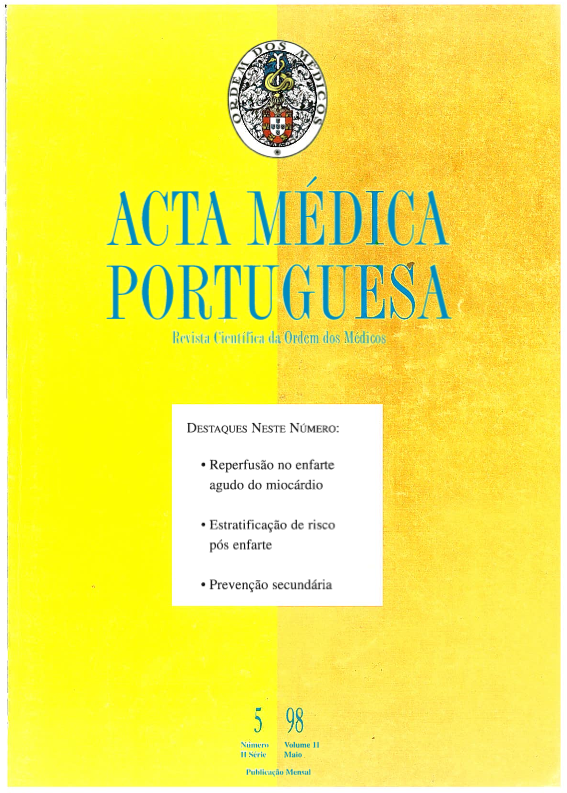Stress echocardiography in myocardial infarct.
DOI:
https://doi.org/10.20344/amp.2254Abstract
For patients with recent myocardial infarction, the main determinants of prognosis are: extent of transmural necrosis, state of the infarct-related artery and the presence and extent of myocardium at risk. The basic principle underlying the use of stress echocardiography states that myocardial ischaemia produces abnormalities of regional wall motion which are by themselves early, sensitive and specific markers of decreased perfusion. Dobutamine infusion allows for evaluation of myocardial contractile reserve by increasing inotropism. In low doses it gives us information on regional viability. In high doses, wall motion under increased oxygen demand, it becomes dependent on the ability of the coronary arteries to increase blood flow. Dipyridamole induces coronary vasodilation. In low doses it produces an increase in the blood flow. In high doses the steal effect deviates blood from the regions dependent on stenosed arteries. Ischaemia and regional wall motion abnormalities ensue. A negative stress echocardiogram, either under dobutamine or dipyridamole, has an excellent negative predictive value while a positive stress echocardiogram is predictive of an increased rate of events in the follow-up.Downloads
Downloads
How to Cite
Issue
Section
License
All the articles published in the AMP are open access and comply with the requirements of funding agencies or academic institutions. The AMP is governed by the terms of the Creative Commons ‘Attribution – Non-Commercial Use - (CC-BY-NC)’ license, regarding the use by third parties.
It is the author’s responsibility to obtain approval for the reproduction of figures, tables, etc. from other publications.
Upon acceptance of an article for publication, the authors will be asked to complete the ICMJE “Copyright Liability and Copyright Sharing Statement “(http://www.actamedicaportuguesa.com/info/AMP-NormasPublicacao.pdf) and the “Declaration of Potential Conflicts of Interest” (http:// www.icmje.org/conflicts-of-interest). An e-mail will be sent to the corresponding author to acknowledge receipt of the manuscript.
After publication, the authors are authorised to make their articles available in repositories of their institutions of origin, as long as they always mention where they were published and according to the Creative Commons license.









